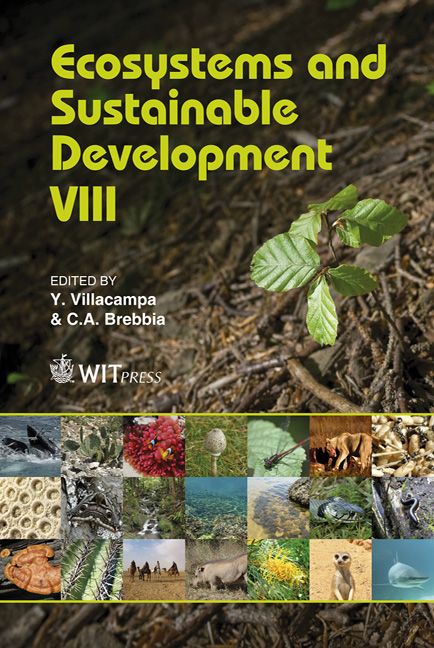Biomes, Ecosystem Services And Emergy: Is There A Relationship?
Price
Free (open access)
Transaction
Volume
144
Pages
7
Page Range
125 - 131
Published
2011
Size
2,732 kb
Paper DOI
10.2495/ECO110111
Copyright
WIT Press
Author(s)
L. Coscieme, N. Marchettini, S. Bastianoni & F. M. Pulselli
Abstract
Ecosystems and human systems are interconnected through a complex series of dynamic relations. In particular, natural functions of ecosystems generate flows of services continuously. To represent adequately the importance of ecosystems for human well-being, the concept of Ecosystem Services (ES) was defined. A complete review of methods and values for the assessment of ES from an economic viewpoint was provided by Costanza et al. in 1997. However, in ES valuation (ESV) several values are neglected or not calculated and estimation methods rely on strictly economic and subjective practices. In order to have a physical reference upon which an objective (and complementary) evaluation can be based, we used the concept of emergy. Emergy is a thermodynamic entity based on energy quality and hierarchy. Life on Earth is organized in an ordered series of energy transformations from one type to the next; these types do not have the same ability to do work. Emergy can be defined as the quantity of (solar) energy that is used up directly or indirectly to make a product or a service. An accounting system based on emergy can be implemented to evaluate production processes, ecosystems and nations. In this paper the emergy of different biomes was calculated and translated into money by means of a specific \“environmental” emergy-to-money conversion factor given by the ratio of the renewable emergy supporting the entire biosphere (emergy baseline) to the value of the world ES previously proposed. The results show that the new economic value is higher than classical ESV values. Keywords: ecosystem services, thermodynamic indicators, Emergy evaluation.
Keywords
ecosystem services, thermodynamic indicators, Emergy evaluation





